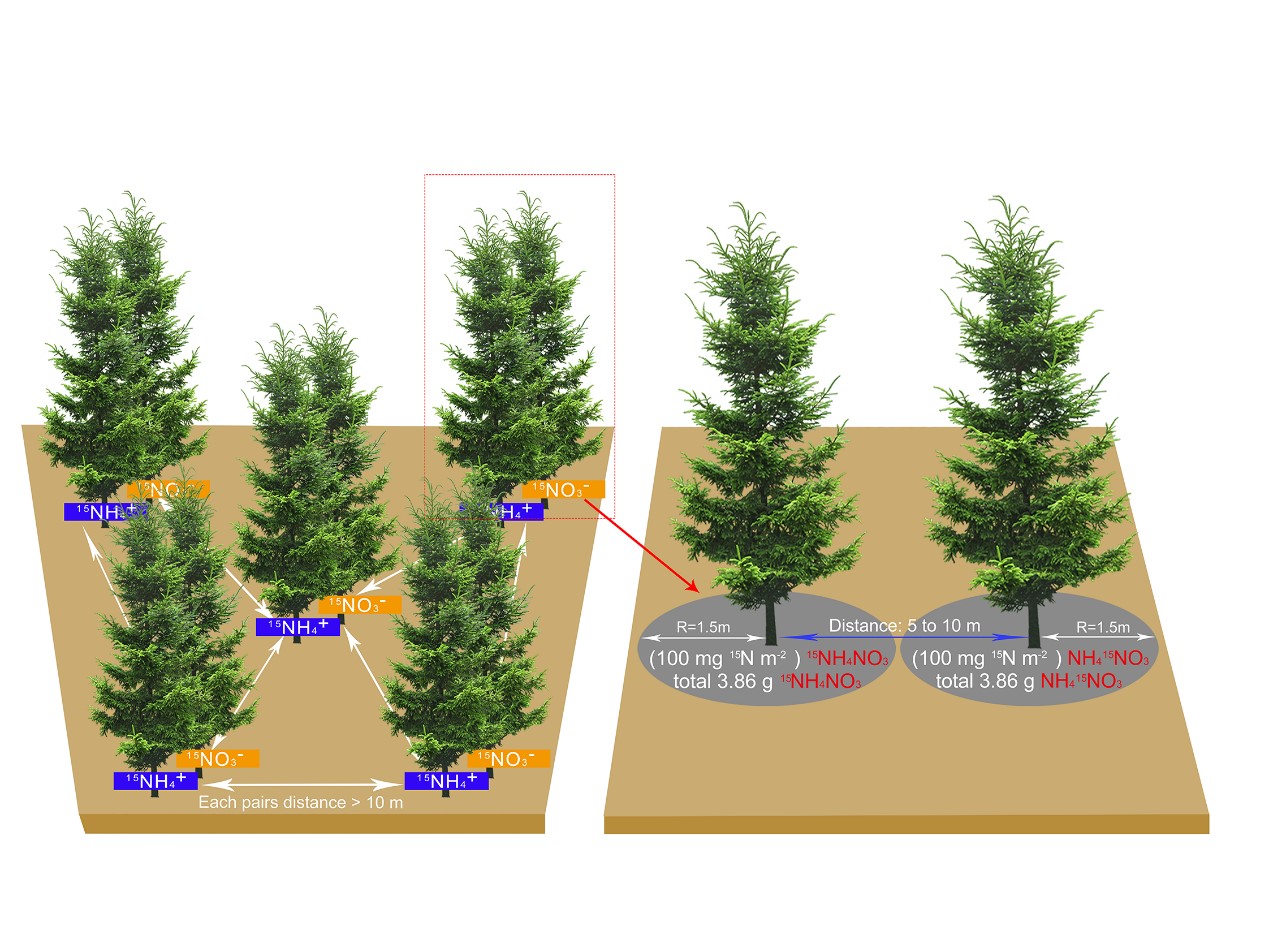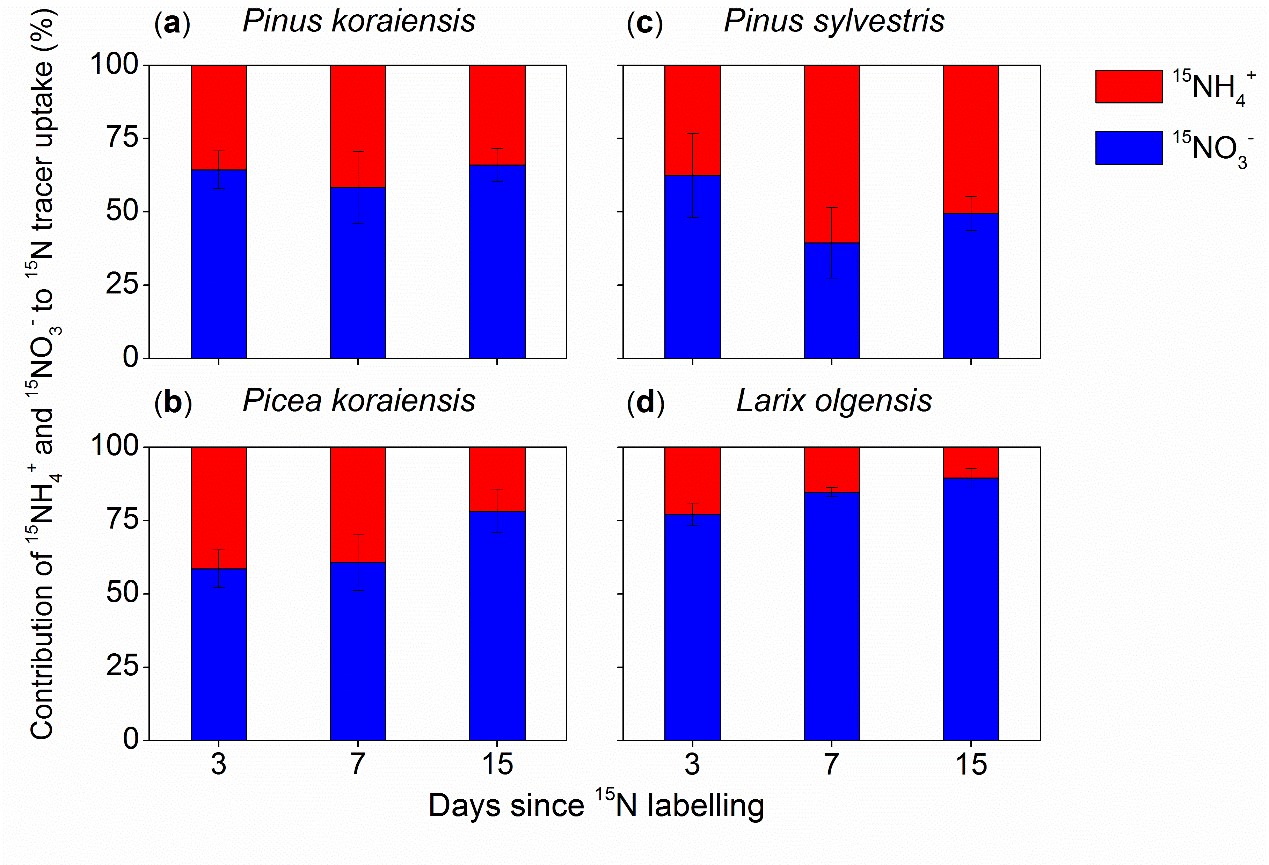Scientists Find the Nitrogen Uptake Strategy of Mature Conifers in Northeast China
Coniferous plantations in Northeast China play a fundamental role in providing ecological services such as timber production and regulating regional climate. Conifers utilize different soil inorganic N pools, ammonium (NH4+) and nitrate (NO3-), as their primary N sources to maintain plant growth and regulating photosynthesis. However, given the fact that the relatively lower soil available N concentrations in temperate climates, conifers would partition soil available N sources to promote species coexistence and forest productivity.
“Previous studies in conifers N uptake strategy mainly focused on fine roots of seedlings or juvenile trees using hydroponic experiments. These studies ignored plant-microbes competition for N. The conclusion of preferential ammonium uptake in conifers, therefore, cannot reflect the realistic N uptake and acquisition by mature trees in the field.” Said Prof. Yunting Fang.
Recently, Prof. Fang’s lab from the Institute of Applied Ecology of Chinese Academy of Sciences, first conducted an in situ whole tree 15N labelling experiment (15NH4+ vs. 15NO3-) (Fig 1.) to investigate the realistic N uptake strategy of four mature conifers (Pinus koraiensis, Pinus sylvestris, Picea koraiensis, and Larix olgensis) in Northeast China. This original in situ whole tree 15N paired labelling method fully considers the competition and fixation of soil nitrogen by soil microorganisms and abiotic processes and can reflect the realistic N uptake strategy of mature conifers in the field.
The researchers found that all four mature coniferous species can assimilate nitrate as efficiently as ammonium (Fig 2.), in contrast to those from the hydroponic experiments by various coniferous species where ammonium was preferentially taken up.
“Efficient utilization of nitrate in conifers can constitute growth advantage and be positive for productivity and timber production for coniferous plantations under the context of increasing proportions of nitrate in N deposition.” Said Prof. Fang. “It is necessary to conduct similar studies on more conifer and broadleaf species to test whether efficient utilization of nitrate is universal and generalizable across forest plants.”
The study entitled “Mature conifers assimilate nitrate as efficiently as ammonium from soils in four forest plantations” has been published online in New Phytologist.
This study was financially supported by the National Key Research and Development Program of China, the Key Research Program of Frontier Sciences of Chinese Academy of Sciences, Liaoning Vitalization Talents Program, and the National Natural Science Foundation of China.

Fig 1. Schematic diagram of experimental design for in situ pairing 15N labelling (Image by WANG Ang).

Fig 2. Contribution of 15NH4+ and 15NO3- to total 15N tracer uptake by the whole plant in the four forest plantations of (a) Pinus koraiensis, (b) Picea koraiensis, (c) Pinus sylvestris, and (d) Larix olgensis (Image by WANG Ang).
Contact
YUE Qian
Institute of Applied Ecology, Chinese Academy of Sciences
Tel: 86-24-83970324
E-mail: yueqian@iae.ac.cn



